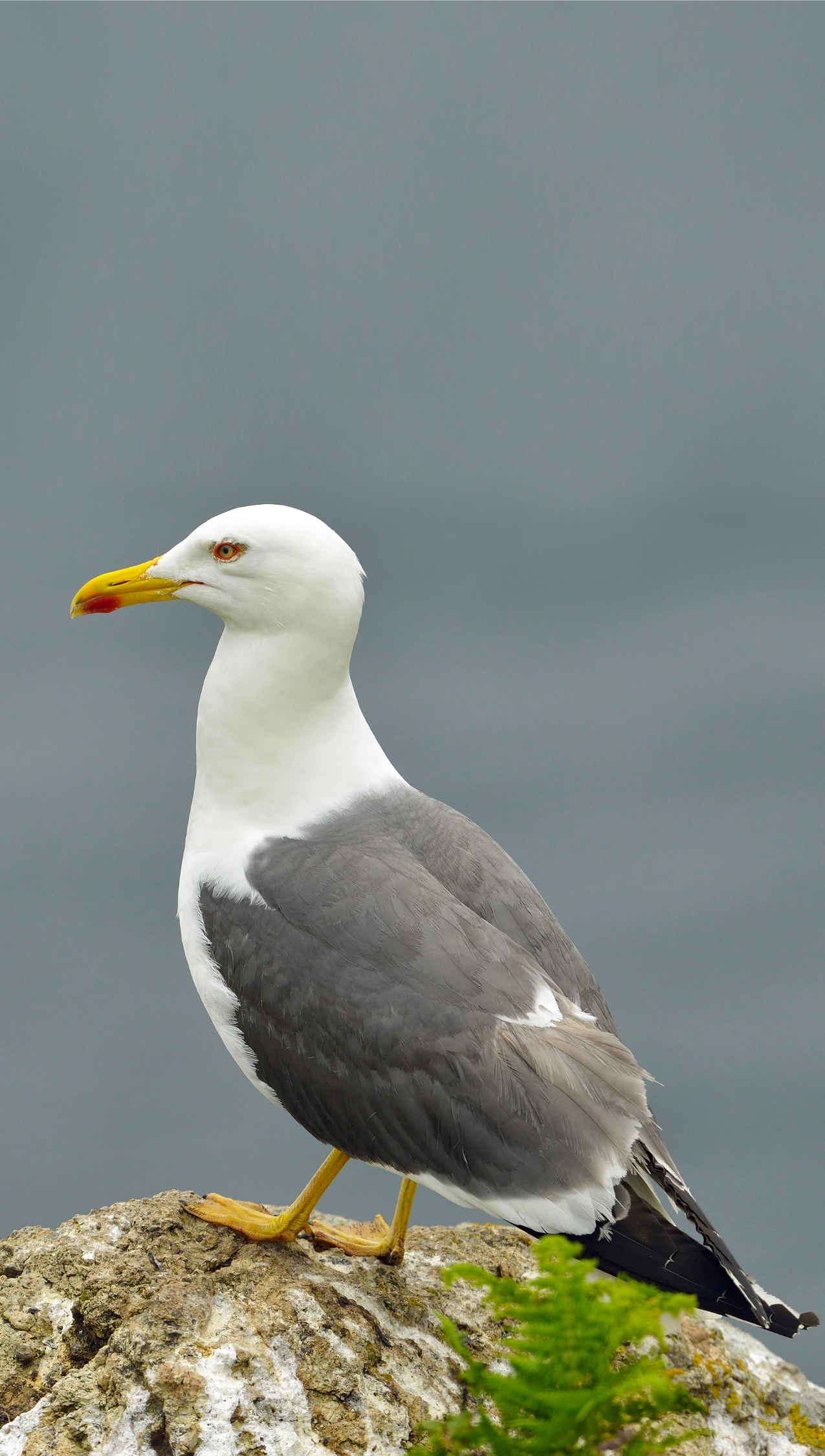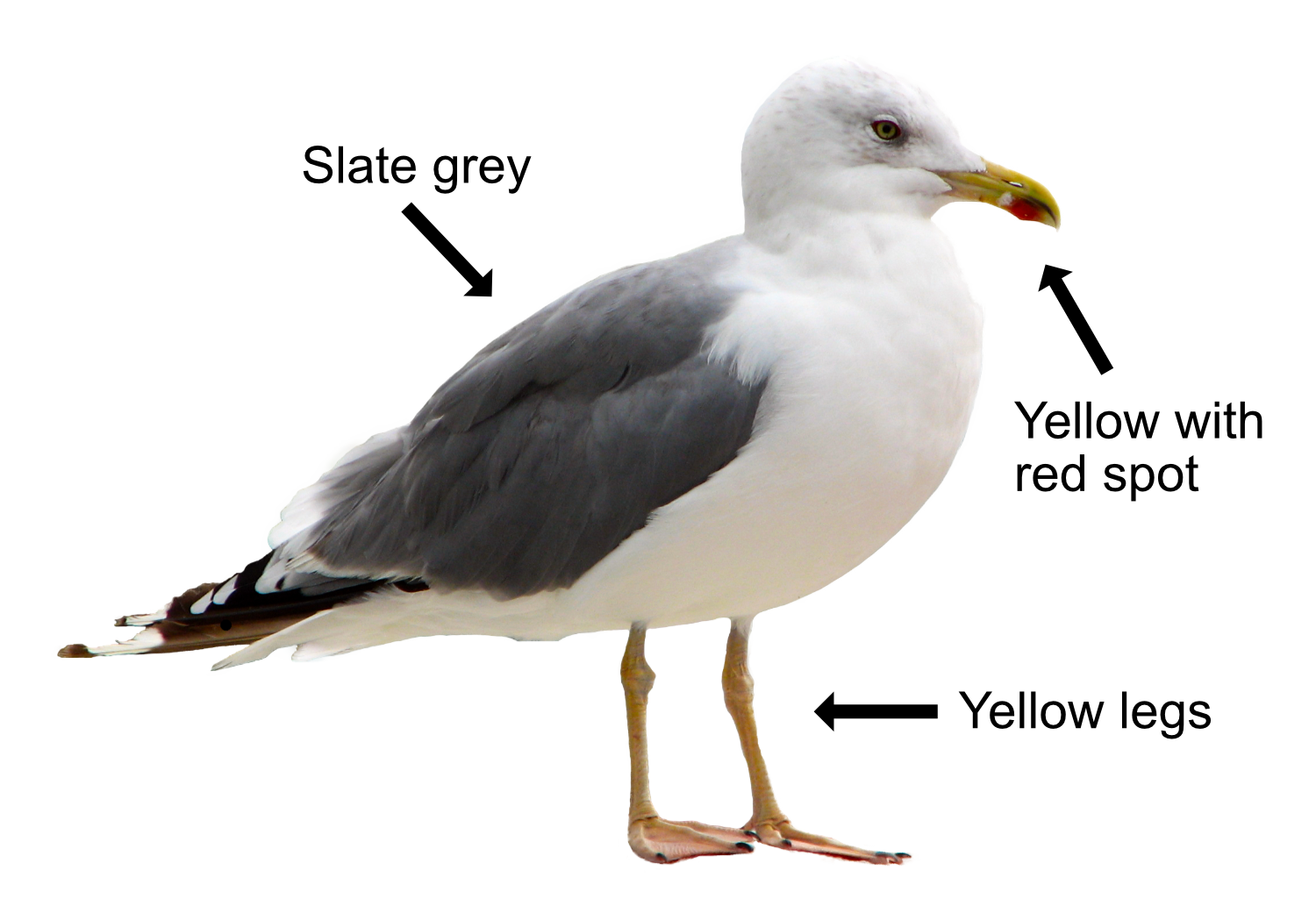
You find the Lesser Black-backed Gull on farmland, wetlands, and around the coast. It is a large, elegant gull, just a little smaller than the Herring Gull. Like many gulls, it can be a nightmare to identify, especially if you can't see its feet. It is omnivorous and often scavenges around rubbish tips and in urban areas. The entire world's population of Lesser Black-backed Gull is in Europe and a staggering one third of the UK's population lives on Walney Island in Cumbria. Until the 1980s, the Lesser Black-backed Gull was almost exclusively a summer visitor, overwintering in France and Portugal, but now an increasing number stay here through the winter in coastal areas.

The Lesser Black-backed Gull is closely related to the Herring Gull, though looks slimmer and more elegant. It is white with a dark slate grey back, yellow legs and a yellow bill with a red spot. Youngsters are streaked brown and take four years to develop into full adult plumage. In flight, it has rather long narrow wings, making it look long winged. Their call is a gruff "kaw" or a laughing "owp-owp-owp" which sounds similar to a Herring Gull but is more nasal and muffled.
Like the Herring Gull, they eat a wide variety of food, such as small mammals, eggs, fish, worms, seaweed, berries, morsels from rubbish tips and food pinched from other birds.
Most Lesser Black-backed Gulls nest near the coast on islands, dunes or moors. Breeding begins in April and they build the nest on the ground from seaweed or grasses, often near tall vegetation where the chicks can hide. The 3 eggs hatch after 24 days and the youngsters leave the nest a few days later but stay nearby. Both parents feed them and they can fly 30-40 days later.
Outside of the breeding season, Lesser Black-backed Gulls range widely, often roosting on reservoirs and big lakes like Rutland Water. About 110,000 breed in Britain, rising to 130,000 in winter as darker backed Scandinavian gulls arrive, though many of the ones that breed here disperse down to Spain. The oldest known Lesser Black-backed Gull lived to 34. After declines in the 19th century, because of persecution, numbers increased, but this has now halted. The Lesser Black-backed Gull is on the Amber List because Britain is home to 40% of the European population and more than half of these are found at fewer than ten sites, making them vulnerable to any local environmental changes.
Their Latin name is 'larus fuscus' from 'larus' for a gull or other large seabird, and 'fuscus' meaning black or brown, reflecting their darker grey back.